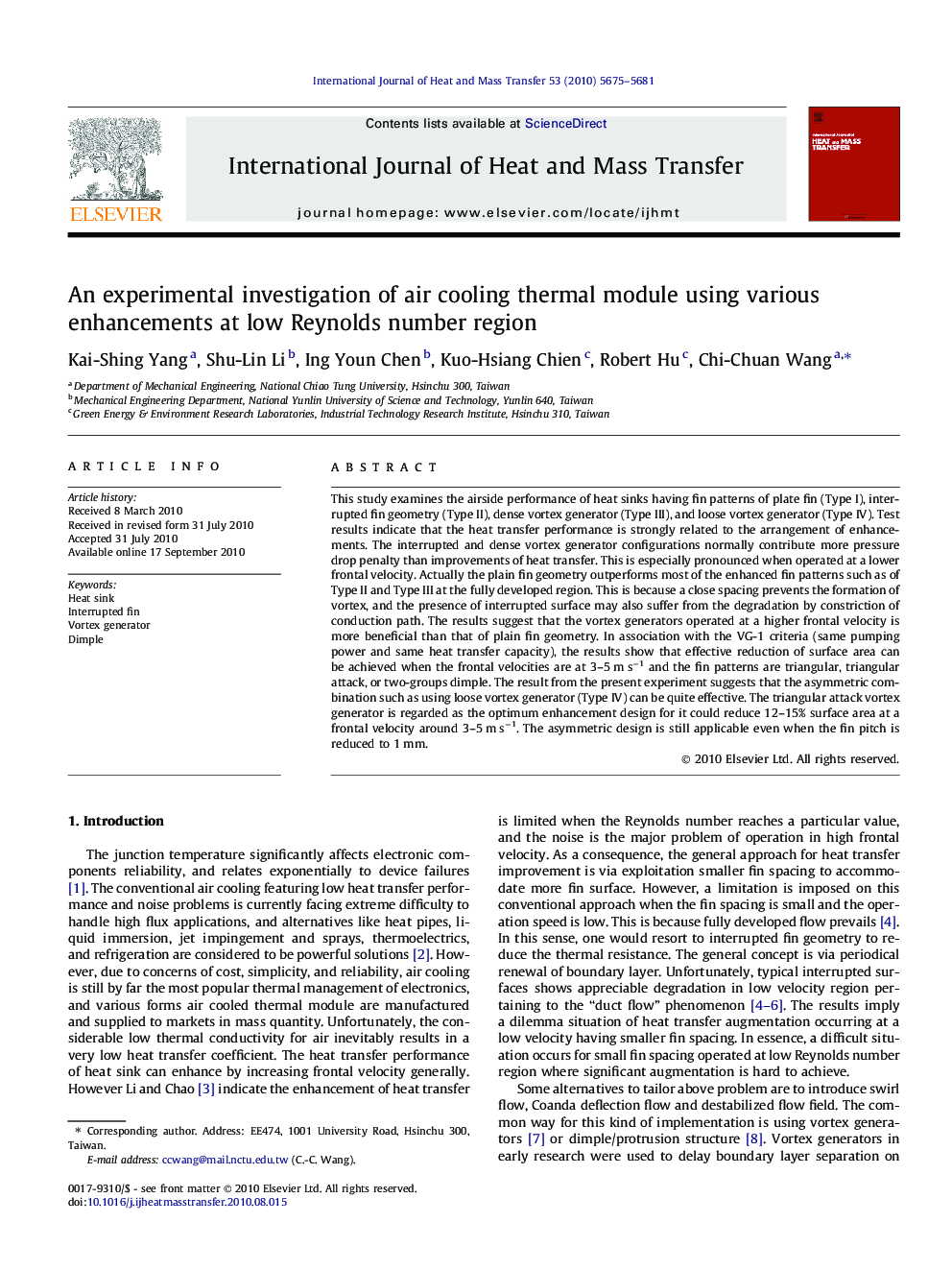| کد مقاله | کد نشریه | سال انتشار | مقاله انگلیسی | نسخه تمام متن |
|---|---|---|---|---|
| 660711 | 1458114 | 2010 | 7 صفحه PDF | دانلود رایگان |

This study examines the airside performance of heat sinks having fin patterns of plate fin (Type I), interrupted fin geometry (Type II), dense vortex generator (Type III), and loose vortex generator (Type IV). Test results indicate that the heat transfer performance is strongly related to the arrangement of enhancements. The interrupted and dense vortex generator configurations normally contribute more pressure drop penalty than improvements of heat transfer. This is especially pronounced when operated at a lower frontal velocity. Actually the plain fin geometry outperforms most of the enhanced fin patterns such as of Type II and Type III at the fully developed region. This is because a close spacing prevents the formation of vortex, and the presence of interrupted surface may also suffer from the degradation by constriction of conduction path. The results suggest that the vortex generators operated at a higher frontal velocity is more beneficial than that of plain fin geometry. In association with the VG-1 criteria (same pumping power and same heat transfer capacity), the results show that effective reduction of surface area can be achieved when the frontal velocities are at 3–5 m s−1 and the fin patterns are triangular, triangular attack, or two-groups dimple. The result from the present experiment suggests that the asymmetric combination such as using loose vortex generator (Type IV) can be quite effective. The triangular attack vortex generator is regarded as the optimum enhancement design for it could reduce 12–15% surface area at a frontal velocity around 3–5 m s−1. The asymmetric design is still applicable even when the fin pitch is reduced to 1 mm.
Journal: International Journal of Heat and Mass Transfer - Volume 53, Issues 25–26, December 2010, Pages 5675–5681